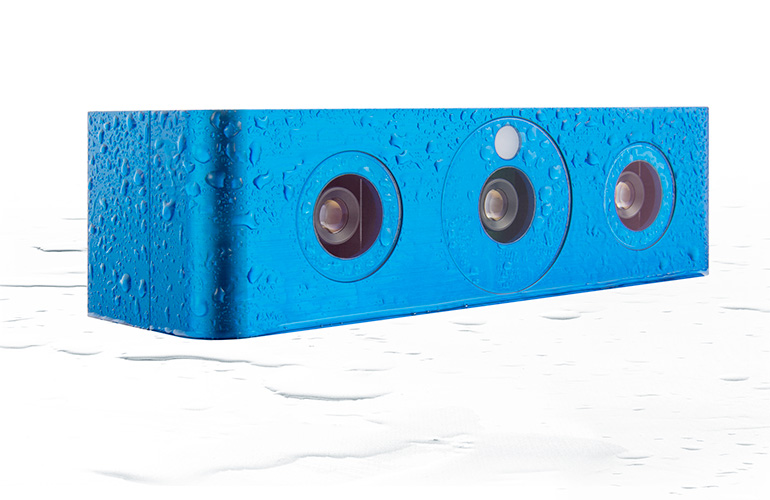|
Listen to this article  |

The resolution and accuracy have almost doubled on The Ensenso N camera while the price has remained the same. | Credit: IDS
The Ensenso N-series 3D cameras have a compact body made of aluminum or a plastic composite, depending on the model, and a pattern projector built right in. They can be used to take pictures of both still and moving objects. The integrated projector projects a high-contrast texture onto the objects in question.
A pattern mask with a random dot pattern fills in surface structures that don’t exist or are only faintly detectable. This makes it possible for the cameras to make detailed 3D point clouds even when the lighting is bad.
The Ensenso models N31, N36, N41 and N46, supercede the previously available N30, N35, N40 and N45. Visually, the cameras are identical to their predecessors. Internally, however, the cameras leverage the new IMX392 sensor from Sony. This sensor has a higher resolution of 2.3 MP over the prior 1.3 MP. All cameras are pre-calibrated and therefore easy to set up. The Ensenso selector on the IDS website helps to choose the right model.
With Ensenso N, users can choose from a series of 3D cameras that give reliable 3D information for a wide range of applications, whether they are fixed in place or being moved around by a robot arm. The cameras show their worth when they are used to pick up single items, support industrial robots that are controlled remotely, help with logistics, and even help to automate high-volume laundry.
The most recent update of the IDS NXT software includes the ability to detect anomalies in addition to Object Detection and Classification. This can be done with only a minimum of training data required to reliably identify both known and unknown deviations.
Credit: Source link


Comments are closed.